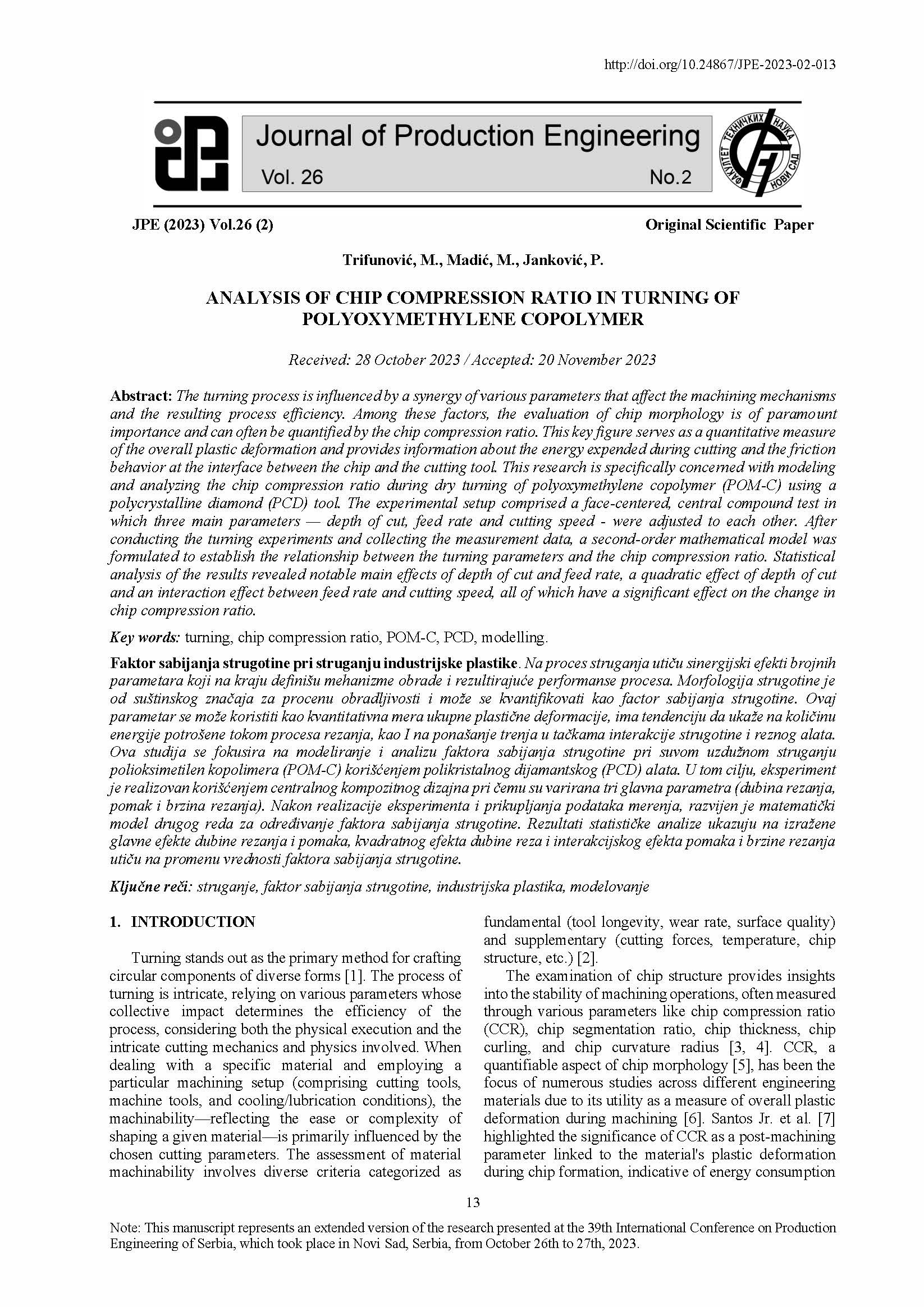
Published 2023-11-22
abstract views: 263 // FULL TEXT ARTICLE (PDF): 350
Keywords
- turning,
- chip compression ratio,
- POM-C,
- PCD,
- modelling
How to Cite
Copyright (c) 2023 Journal of Production Engineering

This work is licensed under a Creative Commons Attribution 4.0 International License.
Abstract
The turning process is influenced by a synergy of various parameters that affect the machining mechanisms and the resulting process efficiency. Among these factors, the evaluation of chip morphology is of paramount importance and can often be quantified by the chip compression ratio. This key figure serves as a quantitative measure of the overall plastic deformation and provides information about the energy expended during cutting and the friction behavior at the interface between the chip and the cutting tool. This research is specifically concerned with modeling and analyzing the chip compression ratio during dry turning of polyoxymethylene copolymer (POM-C) using a polycrystalline diamond (PCD) tool. The experimental setup comprised a face-centered, central compound test in which three main parameters — depth of cut, feed rate and cutting speed - were adjusted to each other. After conducting the turning experiments and collecting the measurement data, a second-order mathematical model was formulated to establish the relationship between the turning parameters and the chip compression ratio. Statistical analysis of the results revealed notable main effects of depth of cut and feed rate, a quadratic effect of depth of cut and an interaction effect between feed rate and cutting speed, all of which have a significant effect on the change in chip compression ratio.

